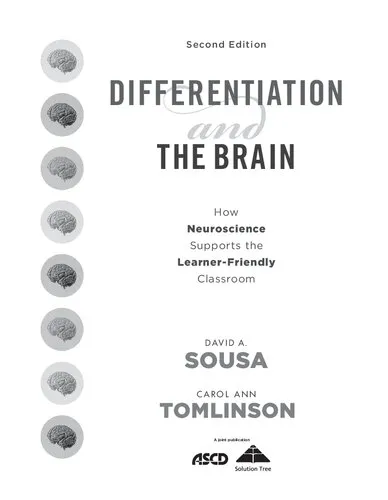Differentiation and the Brain: How Neuroscience Supports the Learner-Friendly Classroom (Use Brain-Based Learning and Neuroeducation to Differentiate Instruction)
4.5
Reviews from our users

You Can Ask your questions from this book's AI after Login
Each download or ask from book AI costs 2 points. To earn more free points, please visit the Points Guide Page and complete some valuable actions.Introduction to Differentiation and the Brain
Understanding how to create a classroom environment that caters to the needs of every student requires a blend of cutting-edge science, effective instructional strategies, and the art of compassionate teaching. Differentiation and the Brain: How Neuroscience Supports the Learner-Friendly Classroom delves into this vital intersection of neuroscience and education, providing educators with the tools to design effective differentiated instruction. Written by David A. Sousa and Carol Ann Tomlinson, this book is a resource that connects the latest research on brain-based learning to practical approaches for meeting the diverse needs of students.
Differentiated instruction has long been recognized as critical for ensuring all learners thrive, yet many educators struggle to apply it effectively in the classroom. This book bridges that gap by explaining the neurological principles behind differentiation and demonstrating how these findings translate into actionable teaching strategies. Whether you're a seasoned educator, a novice teacher, or a school leader seeking to transform classroom practices, this book provides a thoughtful, scientifically-informed, and compassionate approach to instruction that values every student as a unique learner.
Detailed Summary of the Book
At its core, Differentiation and the Brain aims to empower educators to build learner-friendly classrooms by aligning their strategies with how the brain naturally learns. The book first explores the essential principles of differentiation, emphasizing that one-size-fits-all instruction is unrealistic in classrooms where students exhibit a wide range of abilities, interests, and readiness levels. Sousa's background in neuroscience and Tomlinson's expertise in differentiated instruction merge seamlessly to offer practical insights on brain-based teaching methods.
The authors delve into foundational brain science, including how memory works, the role of executive functioning in learning, and strategies to enhance students' engagement with the content. Crucially, the book discusses how stress, motivation, and emotion influence learning, equipping educators to create environments that promote both academic achievement and emotional well-being. The book also addresses common challenges associated with differentiation, such as managing time and resources effectively, and offers techniques for collaboration that ensure successful implementation of these practices.
Through its many chapters, the book provides step-by-step guidance on how teachers can assess student needs, tailor instruction for optimal learning engagement, and balance flexibility with structure. It draws on real-world examples and case studies, ensuring relevancy to today's diverse classrooms.
Key Takeaways
- Differentiation is grounded in neuroscience, and understanding how the brain learns enhances teaching efficacy.
- Effective differentiation requires rigorous planning and flexibility to meet students where they are, not where we assume they should be.
- Engagement, memory, and emotional well-being are deeply intertwined with academic success, all of which can be addressed through brain-based strategies.
- Teachers can implement differentiated strategies without becoming overwhelmed by focusing on small, incremental changes in their practice.
- Collaboration among educators is essential for sustaining successful differentiation across classrooms and schools.
Famous Quotes from the Book
"Differentiation is not about creating a separate curriculum for every student but about teaching in a way that recognizes individual pathways to learning."
"The brain is wired for learning, but it needs rich, meaningful opportunities that align with students' readiness, interests, and learning profiles."
"Every student deserves a teacher who understands and responds not just to what they need academically but also emotionally and psychologically."
Why This Book Matters
Differentiation and the Brain is a groundbreaking book that combines neuroscience research with practical instructional strategies, making it an essential resource for educators in the 21st century. This book addresses the growing diversity in today's classrooms, providing evidence-based methods to help every student meet their full potential. The authors not only theorize about what works but also provide actionable steps that teachers can implement to create a truly learner-friendly classroom.
In a world where education must continually adapt to meet the needs of all learners, understanding the connection between how the brain learns and how we teach is more critical than ever. This book serves as both a guide and an inspiration for educators seeking to foster equitable, inclusive, and effective learning experiences. By internalizing the practices found in this book, teachers can create classrooms that nurture every student’s academic growth and personal development.
Free Direct Download
Get Free Access to Download this and other Thousands of Books (Join Now)
For read this book you need PDF Reader Software like Foxit Reader


